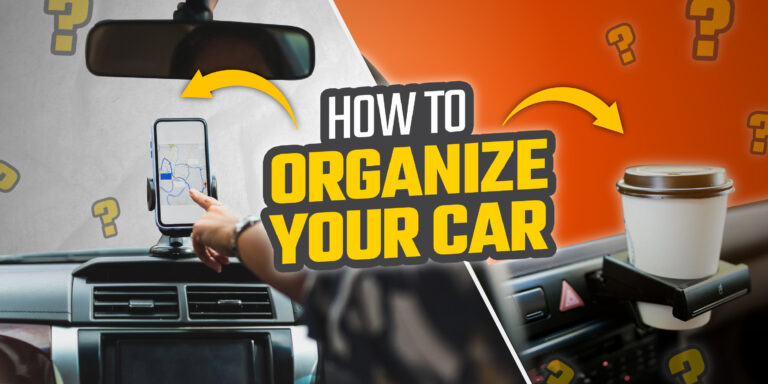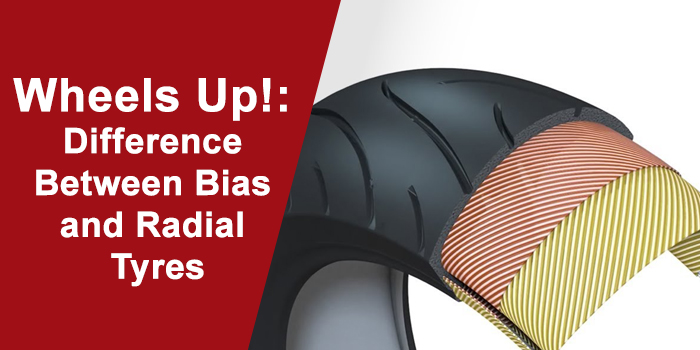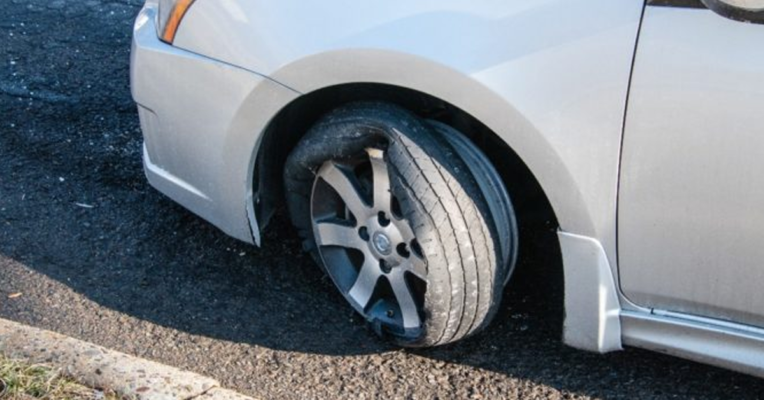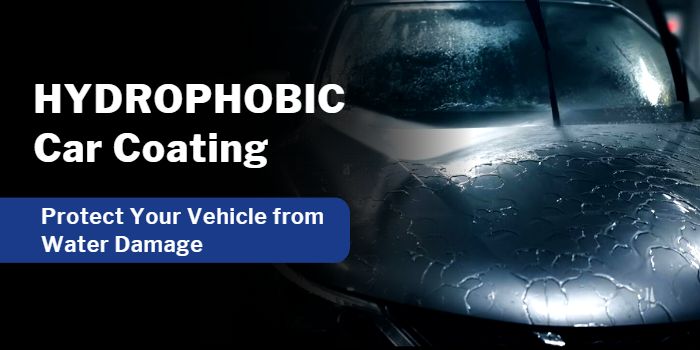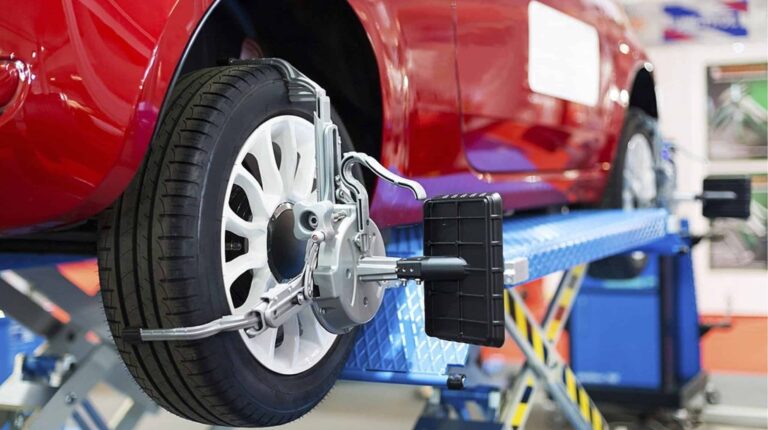
We have seen numerous advancements in automobiles in all these years. Electric windows replaced manual rolling windows, 3-point seatbelts replaced lap belts, automatic shifters replaced column shifters and the list goes on.
But tyres seem to have stood the test of time, or let’s just say, gripped onto it. We all know that tyres are an integral part of any vehicle and we have also persistently ignored them.
Even though the tyres have evolved to some great extent, but they also need care and maintenance like every other part of the vehicle. And by maintenance, I don’t just mean having the right air pressure or replacing them when the wires come off. Tyre maintenance includes wheel alignment and balancing. If you heard that for the first time, let us explain.
What is Wheel Alignment?
By reading the heading, you would strongly believe it’s related to wheels right, well, that’s not the case. Many people confuse the wheel alignment as the alignment of wheels whereas it actually is the alignment of suspension components that then alters the contact patch positioning of the tyres. In simple terms, wheel alignment refers to aligning the wheel angle by tweaking the suspension elements. To align the wheels to have a perfect angle on the ground, certain angles are tweaked via a specialised machine.
Wheel Alignment Elements:
There are three angles that are tweaked to match the perfect wheel alignment for any car.
1: Camber Angle –
Camber angle donates the angle at which your front wheels are angled with each other, either inward or outward, when looked at from the front. The higher degree of inward or outward tilt is termed as negative and positive camber respectively. A non-favourable degree of camber angle can create resistance and increase tread wear. Worn out ball joints, bearings and other suspension elements are among the common causes of a misaligned camber angle.
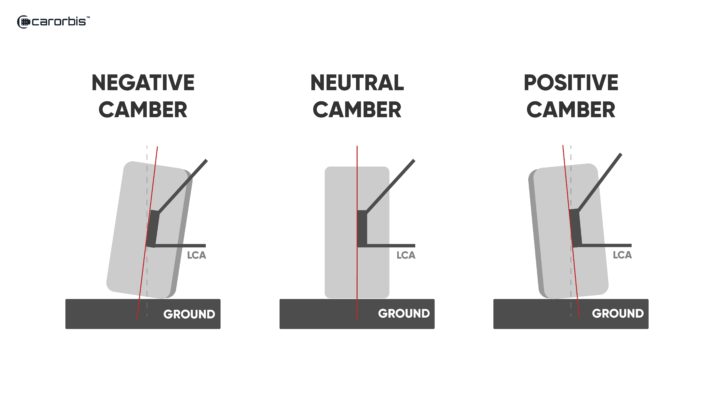
2: Caster Angle –
The caster angle is the tilt of the suspension components in respect to the wheel, either towards the driver or towards the front of the car. Caster angle helps in steering balance, stability and cornering. In the case of a positive caster angle, the steering axis will tilt towards the driver and in the case of a negative caster angle, the steering axis angle will tilt towards the front of the vehicle.
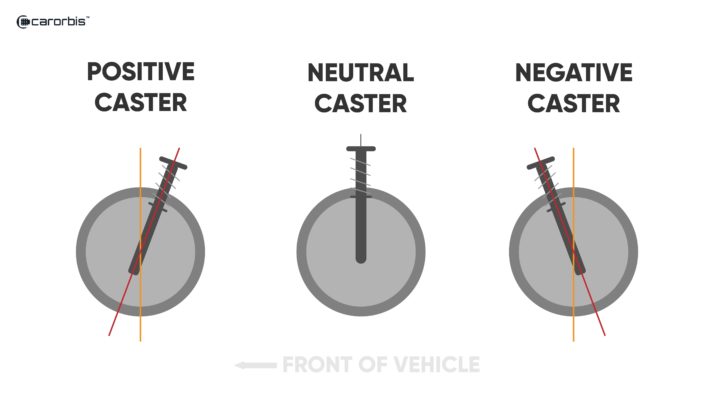
3: Toe Angle –
Toe angle is the inward or outward tilt of tyres when looked from upside. To have a better understanding, align your feet and draw straight imaginary lines, if the lines meet going further, it’s toe-in angle and if the lines go in the opposite direction, it is the toe-out angle.
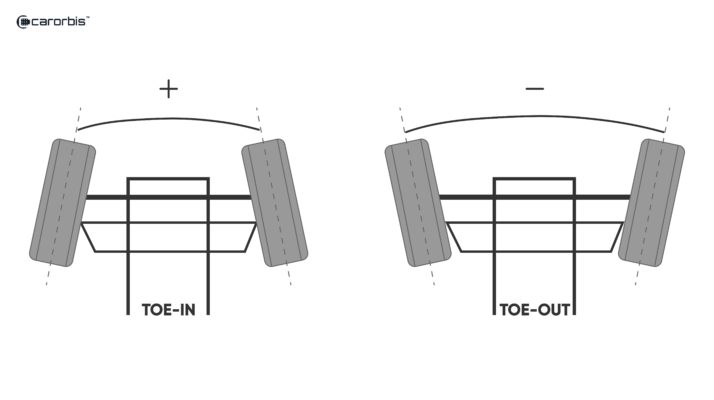
Also Read: Tyre Construction: Its Parts and Their Function
Causes of Incorrect Wheel Alignment:
The most common cause for an incorrect wheel alignment is when your vehicle meets with a sudden impart where a prominent force is taken by the wheels. That can misalign the positioning of the suspension and the wheels can go out of the camber. Small potholes and junction curbs can also hamper the wheel alignment of your vehicle. As the damage is not visible to the eyes, driver’s tend to ignore it. But here is how you can find incorrect wheel alignment in your vehicle.
Signs of Incorrect Wheel Alignment:
Understanding the misalignment of wheels isn’t rocket science and if you pay notice while driving, you will easily make out the difference.
- If your car is pulling to one side of the road or you have to put a certain pressure to keep the car in the middle. But before judging, ensure that you are on a paved road and the tyre pressure is correct.
- If you are feeling some vibrations on the steering, even on a smooth patch of road.
- If you are noticing excessive uneven tread wear on either of the front tyres. Excessive wear on the inside or the outside edges of the tyre.
Also Read: Low Profile Tyres Vs Normal Tyres Vs High Profile Tyres
What is Wheel Balancing?
While the wheel alignment is related to suspension, wheel balancing is regarding the weight balance of wheels. The wheels are taken out from the car and put on a specialised simulator machine that uses dynamic and static balance to balance out the weight of the wheels. In simpler trims, wheel balancing refers to the correction of any weight imbalances in the wheels. Wheel balancing is often done along with wheel alignment as an integral process. Balanced tyres offer a smooth and relaxing drive with minimal vibrations and tyre wear. If the wheels are out of balance, you can feel the rear wheels misbehaving through the steering.
Also Read: Car Suspension – Working and Different Types Explained
How Wheel Balancing is Done?
As we stated earlier, the wheels are taken off the car completely and then strapped on a specialised simulator. It puts dynamic and static balance forces to measure the imbalances. Then the technician puts counterweights on the edge of the rims at places the computer instructs. Once the weights are set and the balance is achieved, the wheels are mounted on the vehicle back. But not always in the same positioning. There is an important task called Tyre Rotation and it’s supposed to be done at regular intervals for better tyre life. Let us explain!
Also Read: What Is Tire Regrooving? Know Its Advantages
Tyre rotation is a strategic repositioning of tyres at regular intervals. It minimises wear and increases the tyre life by having an even tyre wear across all tyres. The reshuffling process is different for front-wheel drive, rear-wheel drive and all-wheel drive vehicles. Here is the correct procedure for all types of drive layouts:
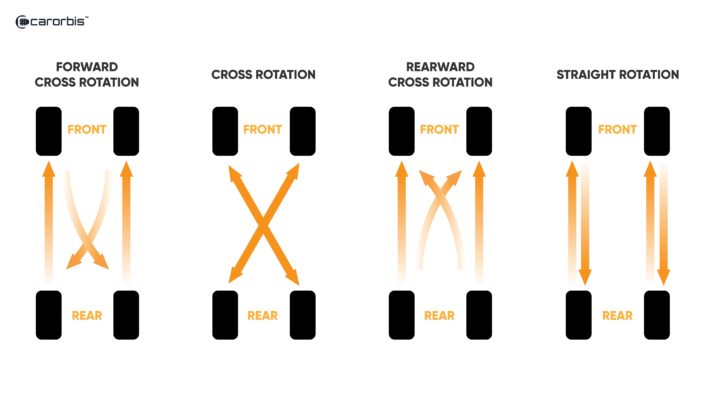
Also Read: Cracked Tires- Here is Everything You Should Know About Them
1: Front-Wheel Drive Rotation –
In front-wheel-drive cars, the front tyres witness the most beating. To do rotation, the front wheels are shifted to the corresponding rear wheels as is. However, the rear wheels are mounted to the front in a cross pattern. For instance, the front right tyre will be taken to the rear right side, whereas the rear left tyre will be taken to the front right side.
2: Rear-Wheel-Drive Rotation –
In rear-wheel-drive cars, the rear wheels channel the power to the ground. In the case of rear-wheel-drive cars, the rear tyres are taken to the front without any changes, whereas the front tyres are taken to the back in a cross pattern. For instance, the front right tyre will be mounted on the rear left side of the car.
3: All-Wheel-Drive Rotation –
All-wheel-drive cars make use of all the wheels and offer utmost grip. Rotation in all-wheel-drive cars is fairly simple, mount the front tyres to the back in cross and vice versa for the rear tyres. For instance, the rear left tyre will be mounted on the front right and the front left tyre will be mounted on the rear right side.
4: The interval for Tyre Rotation:
Generally, tyre manufacturers recommend rotating your vehicle’s tyres every 10,000 km for front-wheel-drive or rear-wheel-drive. In the case of all-wheel-drive or four-wheel-drive vehicles, the recommended rotation interval is every 6,000 km. However, the generally accepted interval is at every 15,000 km for front- and rear-wheel-drive cars and every 10,000 km for all-wheel and four-wheel drive cars.
Frequently Asked Questions:
Here are some general FAQs that people have in mind about wheel alignment, wheel balancing and tyre rotation.
Q1. What’s the cost of wheel alignment and balancing?
Ans. The cost depends on the location and whether the centre is authorised or private. In a nutshell, wheel alignment costs anywhere between Rs 300 – 600 and wheel balancing cost varies in respect to the number of counterweights used. If you get the wheel alignment and balancing combined, it will cost you anywhere between Rs 700 – 1,000.
Q2. Wheel alignment after how many kilometres?
Ans. The generally accepted interval is at every 15,000 km for front- and rear-wheel-drive cars and every 10,000 km for all-wheel and four-wheel drive cars.
Q3. Is wheel balancing and alignment the same thing?
Ans. No, wheel alignment is related to the vehicle’s suspension components whereas wheel balancing is solely related to the balancing of wheels.
Q4. Is tyre rotation necessary?
Ans. Yes, tyre rotation is recommended as it proves even tyre wear for all the wheels and also increases tyre life.
Q5. How often wheel balancing should be done?
Ans. It should always be done in conjunction with wheel alignment for best results.
If you found this article interesting, make sure to read more informative stories on the Carorbis Blog, and also read What can we say about the safety of retreading tires?

